-
Posts
2,799 -
Joined
-
Last visited
-
Days Won
32
Content Type
Profiles
Forums
Blogs
Gallery
Events
Store
Posts posted by webr55
-
-
Emil Papendick was Walter's elder brother. He was born in 1884 and joined the Gren-Reg 3 in Königsberg probably in 1907, when this photo was taken, which shows him as a one-year volunteer:
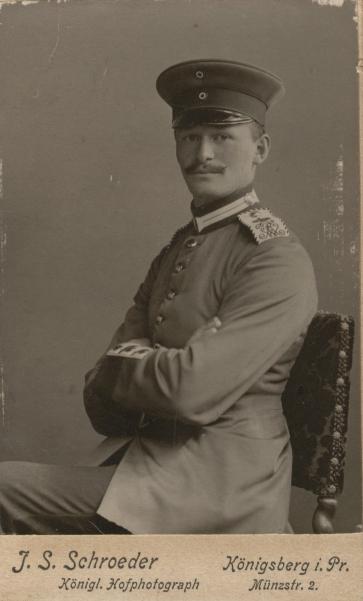 0
0 -
He was assigned to IR52 as company leader after that, here is a last photo of him.
Walter Papendick was KIA on 11.9.1918 near Vailly.
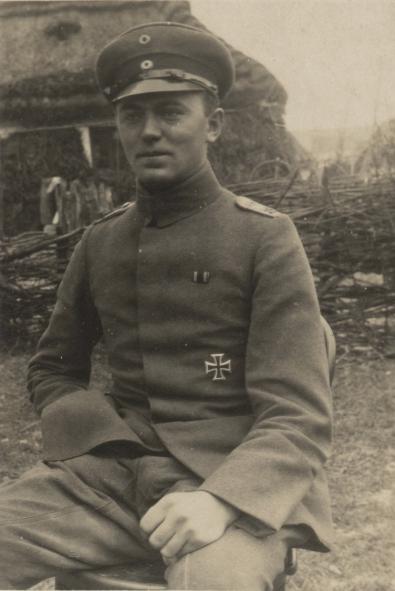 0
0 -
His EK1 in close-up:
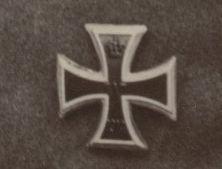 0
0 -
Another pic from the same session:
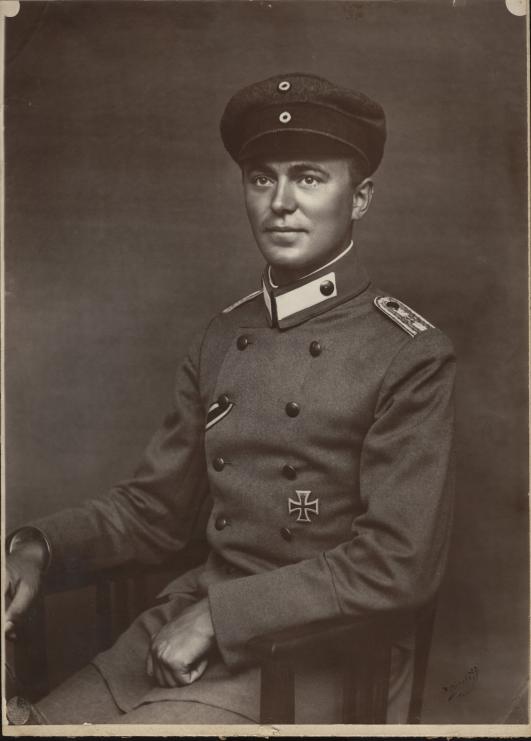 0
0 -
As far as I know, RIR 35 was at the Eastern front, later at Verdun for a short time, and then sent to Galicia where they were sitting quite idle. Finally they were sent to France again during summer 1918 and got involved in some very heavy fighting. RIR 35 was dissolved on 23.7.1918 due to heavy losses. Probably Walter, who survived this, got his EK1 on that occasion:
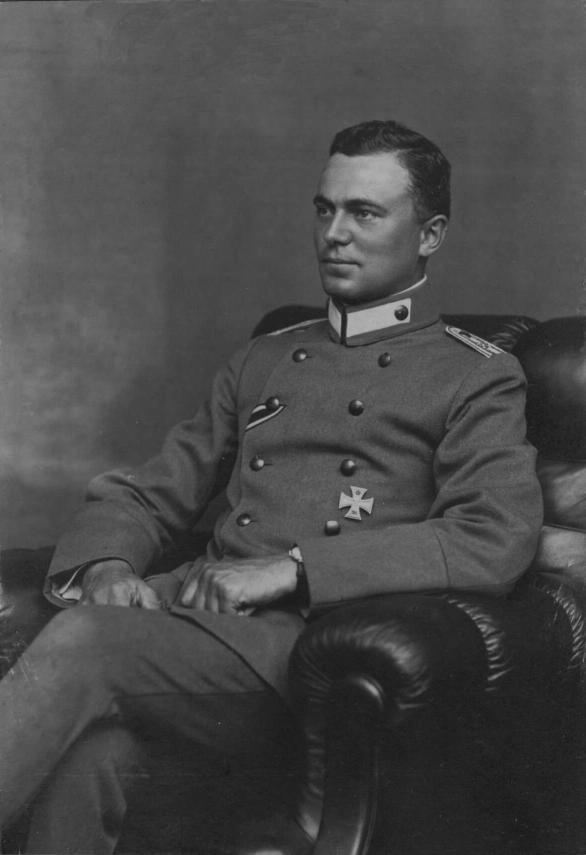 0
0 -
This photo is taken from the regimental history of RIR 35, showing Walter to the right:
 0
0 -
Walter was then assigned to RIR 35 and got the EK2:
 0
0 -
He was commissioned in the 2. GRzF as Lt dR, probably at the end of 1915:
 0
0 -
I've posted this before on another forum, but I post it here again because I'm looking for some specific information... their commission dates (Glenn??

 ).
).
These are two great-granduncles of my wife:
Walter Papendick and Emil Papendick. First Walter:
He was born in 1896 in Sokaiten/East Prussia and joined the 2. Garde-Reg. zF probably in 1914:
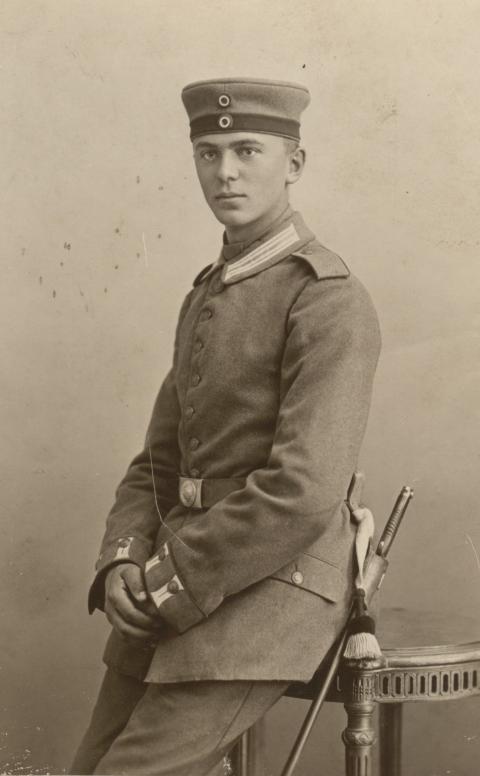 0
0 -
cross-posting!
Another point: I could not find ANY Deckoffizier in the 1914 RL with RAO medal, KO medal AND AllgEhrenzeichen who was NOT in service before 1897. This is a tricky case.
0 -
To my understanding, the post 1918 army or navy ranklists do not have any kolonial, SWA or China awards (campaign medals). They would of course list a Prussian Crown Order with swords awarded in say 1905 to an officer serving in SWA. If I am incorrect on this someone please correct me.
Not quite. The 1924 Navy RL does not yet list Colonial, SWA and China, but the 1932 one DOES.
0 -
...looks like an engineer-type... stand by...
0 -
I remember that old case from WAF, 5 years ago. Schwengers seems to be the name, and the candidate is a pre-1914 cavalry Lt dR who got called back in the 1930s. The MMJ ribbon cannot be original to the tunic, the ribbon bar MIGHT be. In any case, it is a great bar.
As Rick does not like linking to other sites, I have copied his passages from 2002:
"The only Imperial regular officer named Schwengers was a Saxon killed in 1914. There were two--significantly, with RHENISH ties-- pre-1914 Reserve officers named Schwengers-- a Lt dR of some seniority resident in Duisburg 1914 in Feldart Rgt 7, and a 1912/13 Lt dR resident in Schwarzburg May '13 and Eisenach May '14 in Kurassier Rgt 8: either of whom COULD have "gone Panzer" branch."
"Major (E) 1.9.38 #15 Schwengers was on staff of Wehr Ersatz Inspektion Innsbruck then. He does not appear in the 1944 Seniority List, so presumably had been killed or died in between. Given normal promotion, probably Oberstleutnant in 1942. I don't find him on the German Cross list, so can't imagine what else that set of loops could be for on his right side. If NOT a Spanish Cross, then some strange "foreign" award.
He had to have been one of the pre-WW1 RESERVE Rhineland Schwengers mentioned above, who went "full time" as a Supplementary (E) officer in the 1930s. I'd suspect the 1913/14 cavalry Lt dR one, since my Mecklenburger dR officer was of that same age/seniority and got pulled back in, ending up as an Oberstleutnant too."
"I'd say that the super ribbon bar does NOT belong on this tunic! I can't imagine a 50 something retread Major having racked up ALL THAT STUFF and nobody ever heard of him! Gotta seek out the Big Heroes of the Legion Condor!"
"I've been through the available WW1 award rolls that I have and don't find anything WW1 for a Schwengers from Baden, Bavaria, Lippe-Detmold, the Prussian Hohenzollern House OrderX, Saxony, Saxe-Altenburg, or Waldeck.
Since if he were the younger ca 1912/13 reserve Schwengers, that would place him born about 1885/6, that would have made him a damn old Hauptmann to be zipping around single handedly winning the war for Franco!
Nor was our Mystery Schwengers a young former police officer called into the army-- there was but the single Major (E) in 1939."
"If he was, as I think fairly certain, one of those two men, if he had pinback ribbon bar loops as long as that monster spread, that would seem to reinforce that ribbon bar bbeing original to the tunic being possible. (even at the 25mm size each ribbon, I can't imagine a purely "WW1 veteran" combination missing all the stuff I checked for above and didn't find). There is no way the Bavarian Max-Joseph/Bravery Medal ribbon from the buttonhole IS a match, though, and if everything is faded to the same degree, that would just seem to indicate looong storage in sunlight."
0 -
Hello Dave,
is this tunic with the giant ribbon bar named? And did the bar come with the tunic? If so, I would be VERY interested in a close-up of the ribbon bar!
Thanks
Chris
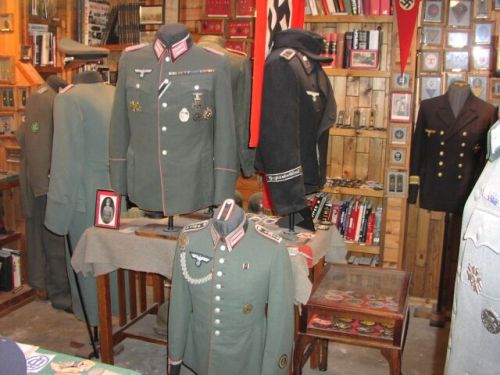
 0
0 -
For educational purpose. May I ask where you have checked for his degree?
Some library catalogs show exam dates of PhD candidates, for example the Staatsbibliothek Berlin.
Regards
Chris
0 -
Sorry, can't find a Rudolf Hüne with a Dr. Maybe - just a guess - he got a Dr. in law from some department which did not require a publication. Could be an Austrian university - they have always been notorious in that regard.
0 -
Thanks to Steen Ammentorp for pointing out the Berlin Central and Provincial Library website, which has Berlin city directories for FOREVER

Now that is a valuable research tool! Thanks for finding it!

Chris
0 -
Yes, Alfred Kaufmann held anti-Nazi meetings in Giessen, was arrested and sentenced to death after his circle was infiltrated by a female Gestapo agent.
BUT - after a number of petitions - Kaufmann was "pardoned" to life imprisonment and finally released by American troops. He died however in 1946, from the effects of his prison time, at the age of 78.
0 -
Congratulations Rick! It's really great to see so many projects advancing!
David: The Hauptstaatsarchiv Hannover seems to keep a number of Hanover's rolls, at least for the Guelphen Order.
0 -
Very nice and rare example!
I have a pic of this bar with the BH4. The bar is not mine, don't know where I saw it. I've tried to ID it, but unsuccessfully.
 0
0 -
The back.
These bars are probably made from original parts. Some others are tab back fakes. But as I said, some are ok, so be careful what you're buying!
Regards
Chris
 0
0 -
-
-
I have to reactivate this thread because there is a flood of new fakes currently on ebay, from seller "bedel2000". Some of his stuff is ok, but many are fakes, although he/she guarantees originality.
Some examples:
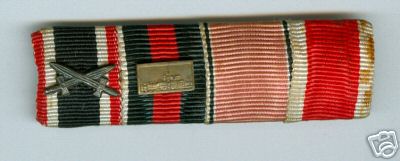 0
0





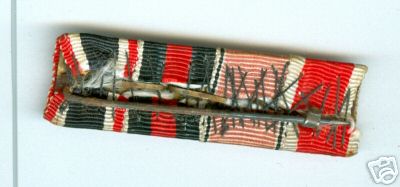
Two brothers and officers
in Germany: Imperial: The Orders, Decorations and Medals of The Imperial German States
Posted · Edited by webr55
Emil was however not commissioned before WW1. Probably made only Vizefw dR, but he must have made officer in 1914 or at the beginning of 1915. This pic shows him as Lt dR during the war.